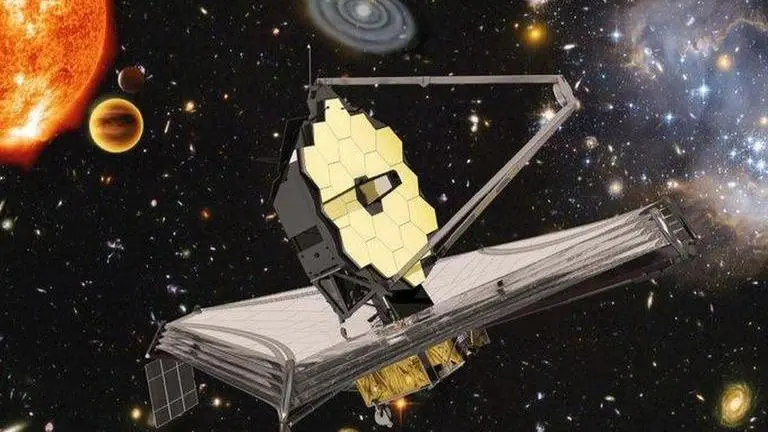Updated 27 June 2022 at 19:28 IST
James Webb Space Telescope will collab with EHT to study Milky Way's monster black hole
The James Webb Space Telescope (JWST) will reportedly partner with the Event Horizon Telescope to study Milky Way's supermassive black hole.
- Science News
- 2 min read

The James Webb Space Telescope (JWST) is just two weeks away from releasing its first images. Built to succeed the Hubble Space Telescope, JWST will observe the universe in infrared and uncover unprecedented secrets. Ahead of the historic photo release, reports have emerged that JWST, coupled with the Event Horizon Telescope (EHT) will be used to observe Sagittarius A*, the supermassive black hole at the Milky Way’s center which was photographed for the first time in May this year.
This Hubble Ultra Deep Field contains approximately 10,000 galaxies, extending back in time to within a few hundred million years of the big bang. What do galaxies that existed even earlier look like? Two teams using #NASAWebb will revise what we know: https://t.co/uGHrCQeCJ1 pic.twitter.com/oqCttOBc1k
— NASA Webb Telescope (@NASAWebb) June 22, 2022
About Milky way's supermassive black hole
The Sagittarius A* was photographed after observations by over 300 scientists and a network of eight major observatories around the world, collectively known as the EHT. This monster cosmic object is located about 27,000 light-years away from Earth and is four million times more massive than the sun. However, this supermassive black hole is still significantly smaller than the black hole in the Messier 87 (M87) galaxy.
The M87 black hole, which was photographed by the EHT for the first time in 2019, is a whopping 6.5 billion times the mass of the sun and is located about 55 million light-years from Earth.
JSWT to collaborate with EHT
Farhad Yusef-Zadeh, an astronomer at Northwestern University in Illinois, told Space.com that the partnership would help scientists study more about the Sgr A*'s flares. These flares are basically particles that shoot out at near-light speed and astronomers intend to find out how they are produced. Earlier this year, Yusef-Zadeh worked on the JWST and observed the black hole while the telescope was being commissioned for science.
Advertisement
"I thought that the image would be a little bit more messy because of the variability of Sagittarius A*," he told Space.com. "It looks pretty good, for sure, for a first image". Webb, which is installed at the second Lagrange point about 15 lakh kilometres from Earth, is in the final stages of commissioning and will soon release images that will "wow" the Earthlings, NASA stated. Launched on December 25, the Webb telescope has been jointly developed by NASA, the European Space Agency (ESA) and the Canadian Space Agency (CSA) at a cost of around $10 billion.
Published By : Harsh Vardhan
Published On: 27 June 2022 at 19:28 IST
